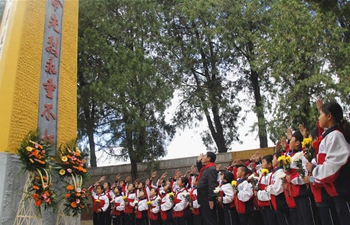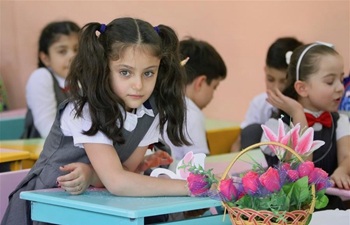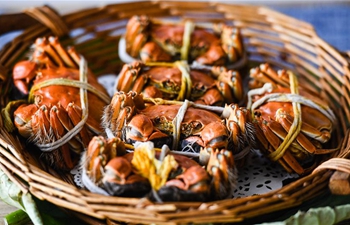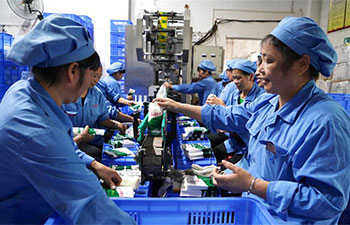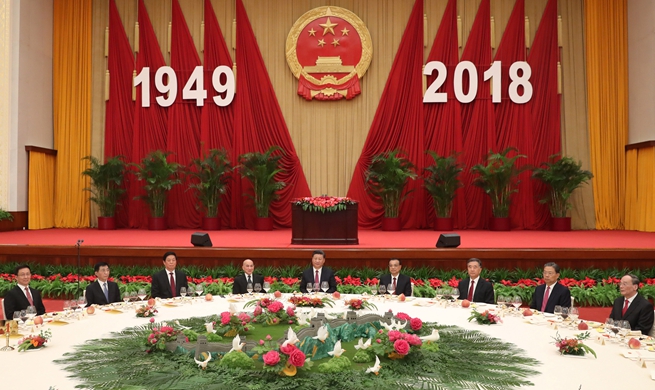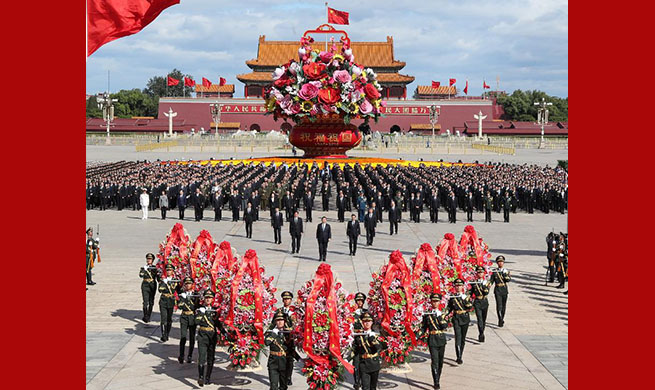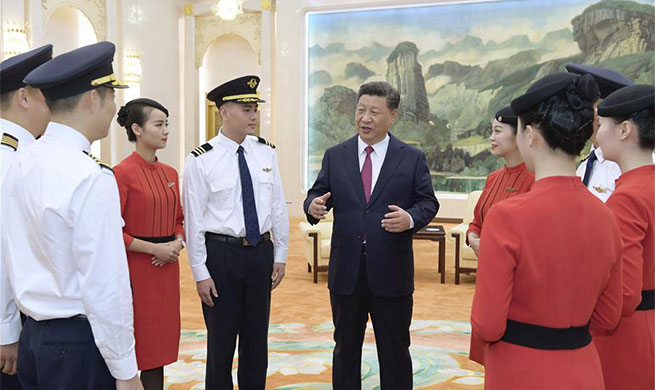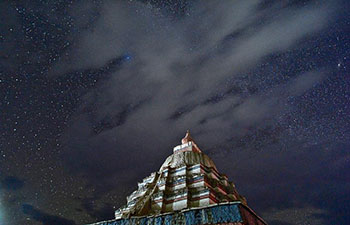LHASA, Sept. 30 (Xinhua) -- Southwest China's Tibet Autonomous Region started Sunday drawing up standards for Thangka embroidery -- a traditional style of Tibetan Buddhist scroll painting -- and patchwork crafts, local authorities said Sunday.
The standards will define Thangka embroidery, in terms of cloth and skills, as well as the framing, collecting of Thangka embroidery and patchwork crafts.
The standards, expected to be completed by May in 2019, will also include rating principles for Thangka products.
Thangka is a form of silk painting that dates back to the Tibetan Tubo Kingdom (about 629-840). Thangka are always painted with mineral and organic pigments derived from materials such as coral, agate, sapphire, pearl and gold, and the color on the paintings can last for centuries.
Thangka paintings, murals, patchwork crafts and sculptures were listed as Intangible Cultural Heritage of Humanity by UNESCO in 2009.
As a Buddhist art form, Thangka paintings are often hung on the walls of the homes of Tibetan families for worship. Moreover, they are also ideal souvenirs.
In recent years, the Thangka market thrived. There are over 2,000 professional painters and about 10,000 people engaged in the industry in Tibet, creating an annual output exceeding 700 million yuan (about 102 U.S. dollars).
"The standards will help protect and inherit the intangible cultural heritage in Tibet, and promote the region's cultural industry development," said Sangpo, deputy director with the regional culture department.




